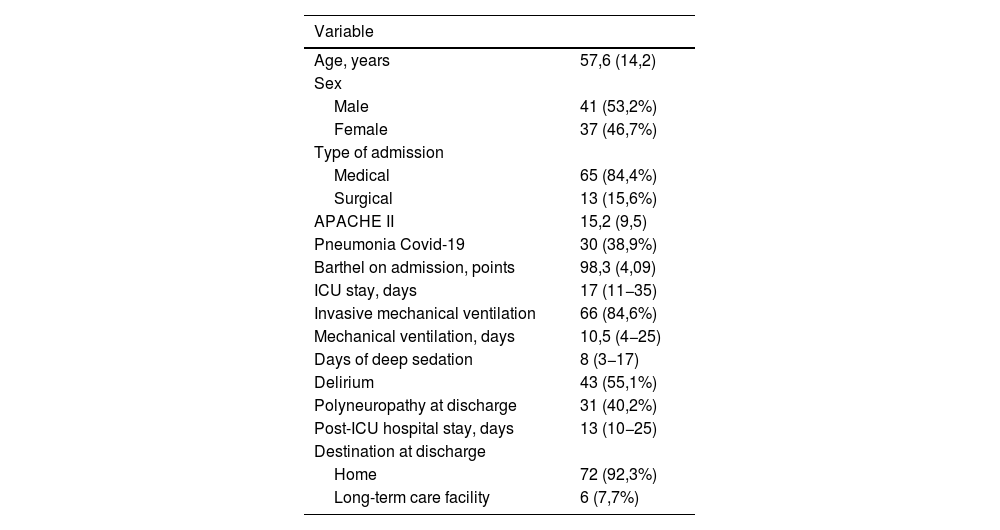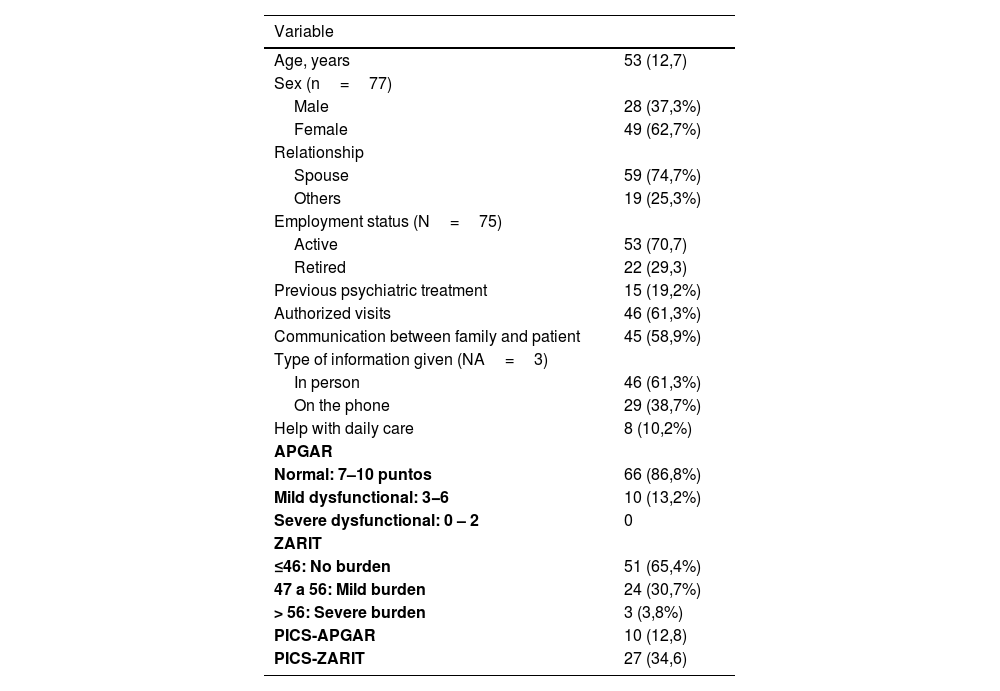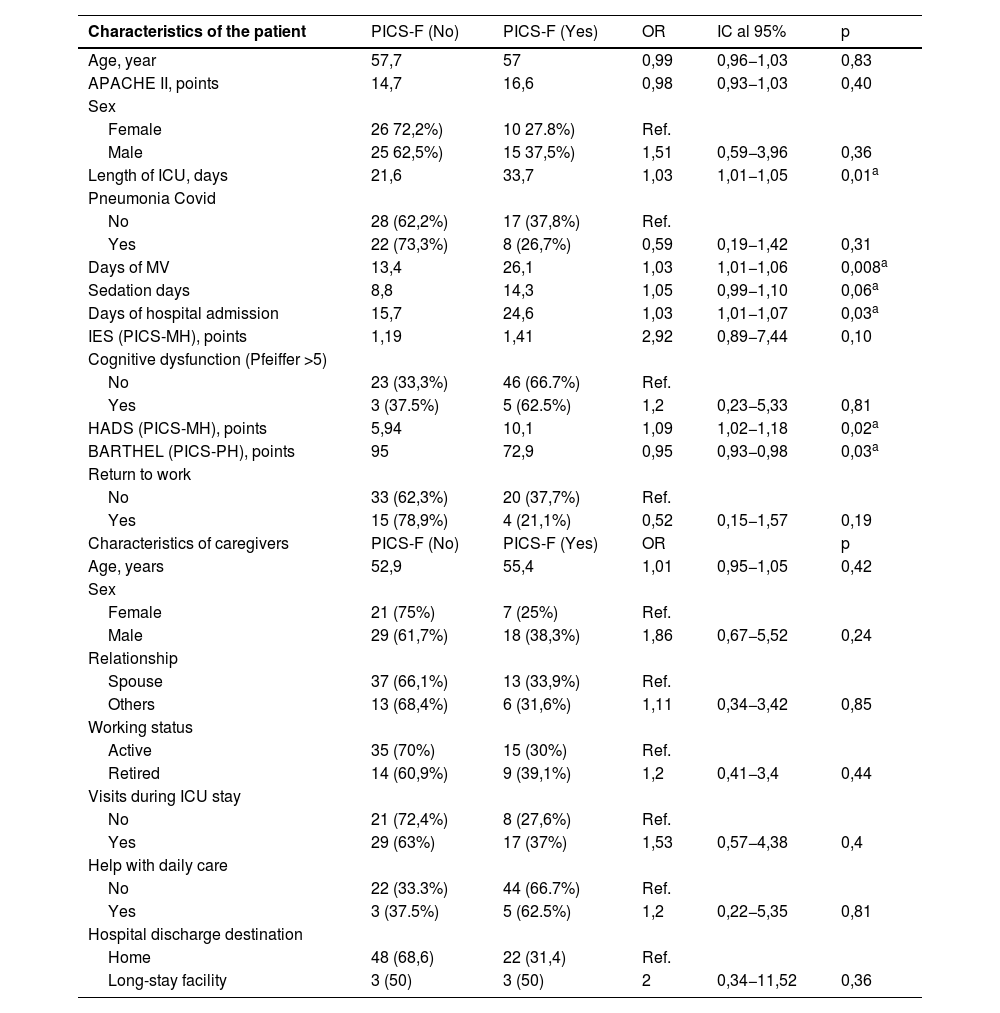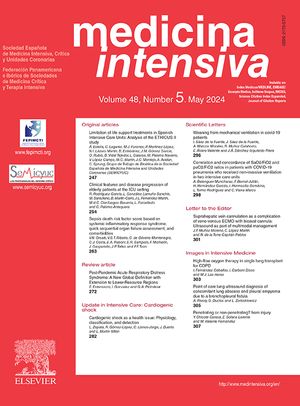To determine the incidence of primary caregiver burden in a cohort of family members of critically ill patients admitted to ICU and to identify risk factors related to its development in both the patient and the family member.
DesignProspective observational cohort study was conducted for 24 months.
SettingHospital Universitario Clínico San Cecilio, Granada.
PatientsThe sample was the primary caregivers of all patients with risk factors for development of PICS (Post-Intensive Care Syndrome).
InterventionsThe follow-up protocol consisted of evaluation 3 months after discharge from the ICU in a specific consultation.
Main variables of interestThe scales used in patients were Barthel, SF-12, HADS, Pfeiffer, IES-6 and in relatives the Apgar and Zarit.
ResultsA total of 93 patients and caregivers were included in the follow-up. 15 relatives did not complete the follow-up questionnaires and were excluded from the study. The incidence of PICS-F (Family Post Intensive Care Syndrome) defined by the presence of primary caregiver burden in our cohort of patients is 34.6% (n=27), 95% CI 25.0−45.7. The risk factors for the development of caregiver burden are the presence of physical impairment, anxiety or post-traumatic stress in the patient, with no relationship found with the characteristics studied in the family member.
ConclusionsOne out of 3 relatives of patients with risk factors for the development of PICS presents at 3 months caregiver burden. This is related to factors dependent on the patient's state of health.
Determinar la incidencia de la sobrecarga del cuidador principal en una cohorte de familiares de pacientes críticos ingresados en UCI e identificar los factores de riesgo relacionados con su desarrollo tanto en el paciente como en el familiar.
DiseñoEstudio de cohortes observacional prospectivo durante 24 meses.
ÁmbitoHospital Universitario Clínico San Cecilio de Granada.
PacientesLa muestra estuvo compuesta por los cuidadores principales de todos los pacientes con factores de riesgo para el desarrollo de SPCI (Síndrome Post-Cuidados Intensivos).
IntervencionesEl protocolo de seguimiento consistió en la evaluación a los 3 meses del alta de la UCI en una consulta específica.
Variables de interés principalesLas escalas utilizadas fueron Barthel, SF-12, HADS, Pfeiffer, IES-6, Apgar y Zarit.
ResultadosUn total de 93 pacientes y cuidadores fueron incluidos en el seguimiento. 15 cuidadores no completaron los cuestionarios de seguimiento y fueron excluidos del estudio. La incidencia de PICS-F (Síndrome Post-Cuidados Intensivos Familiar) definido por la presencia de sobrecarga del cuidador en nuestra cohorte es del 34,6% (n=27), IC 95% 25,0–45,7. Los factores de riesgo para el desarrollo del mismo son la presencia de deterioro físico, ansiedad o estrés postraumático en el paciente, no encontrándose relación con las características estudiadas en el familiar.
ConclusionesUno de cada 3 familiares de pacientes con factores de riesgo para el desarrollo de SPCI presenta a los 3 meses sobrecarga del cuidador, relacionándose con factores dependientes del estado de salud del paciente.
Article
Go to the members area of the website of the SEMICYUC (www.semicyuc.org )and click the link to the magazine.










